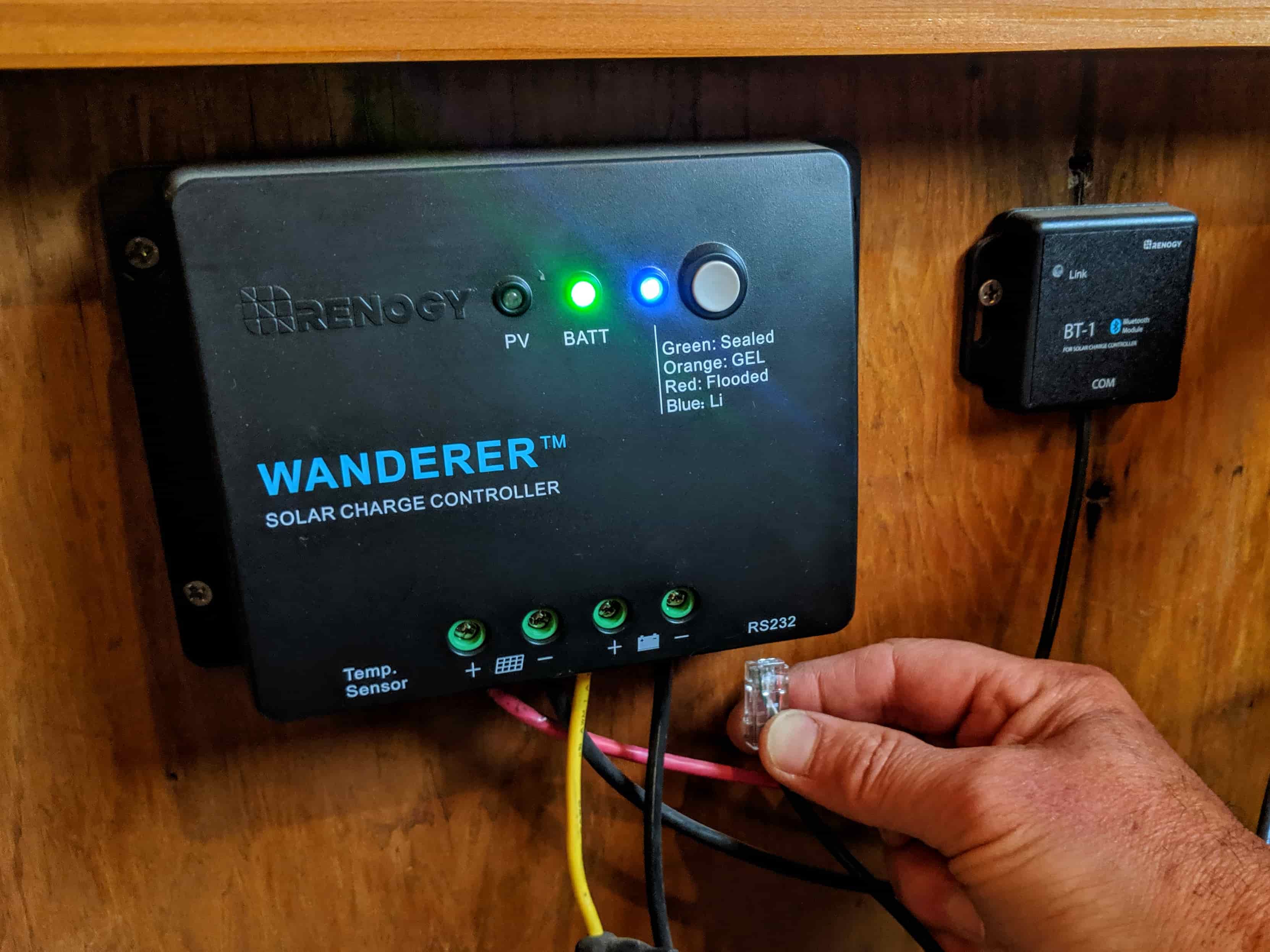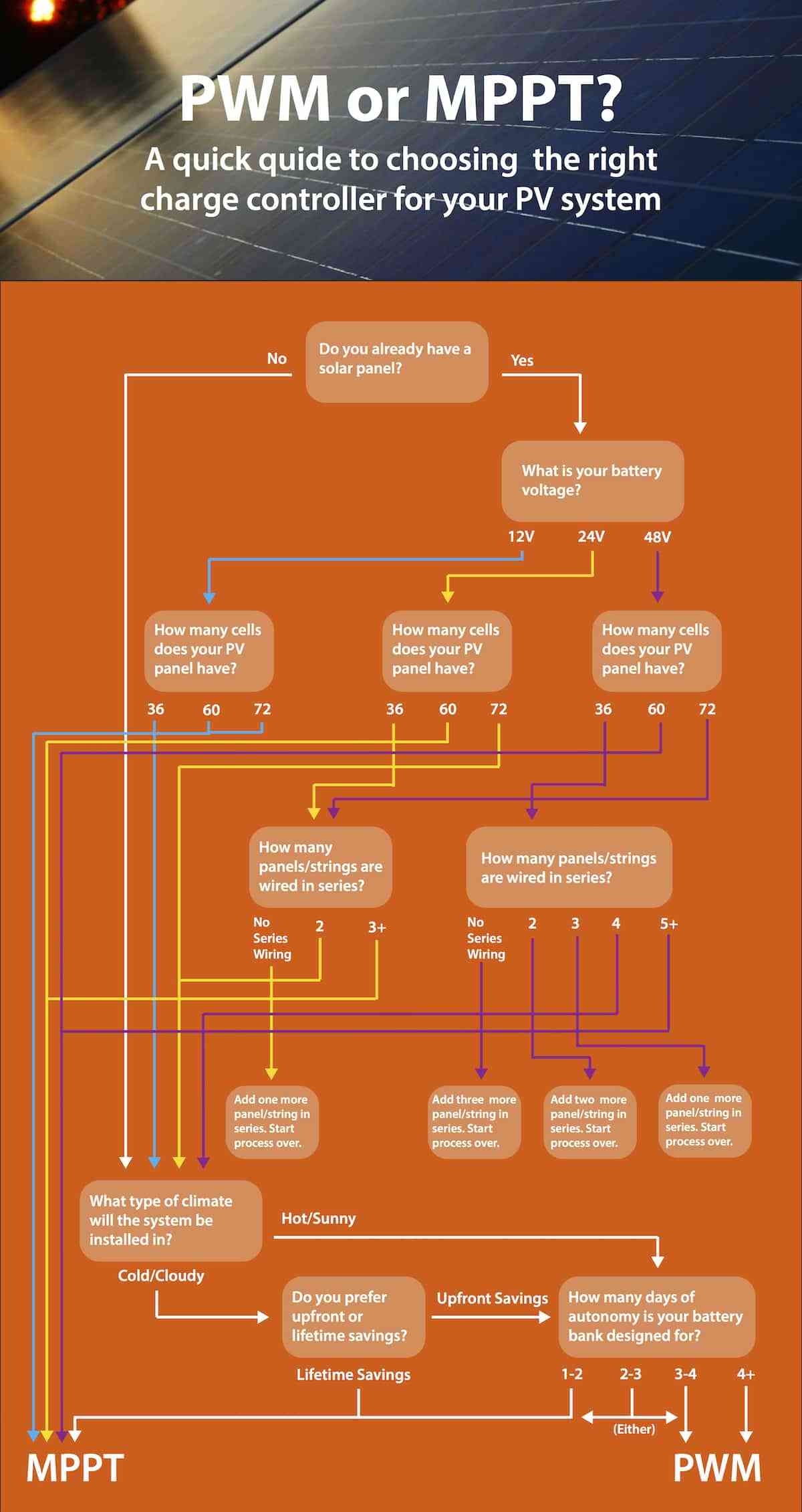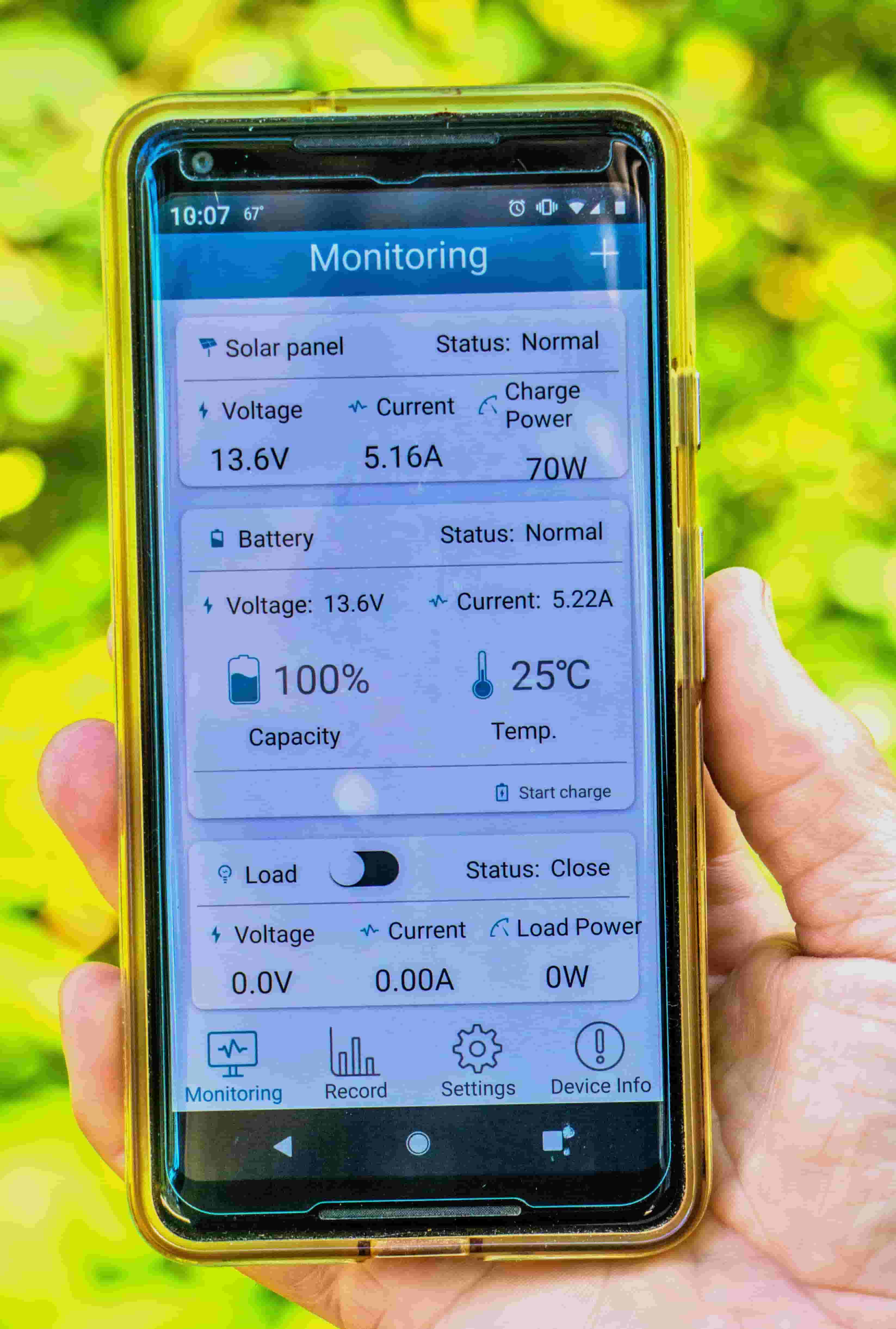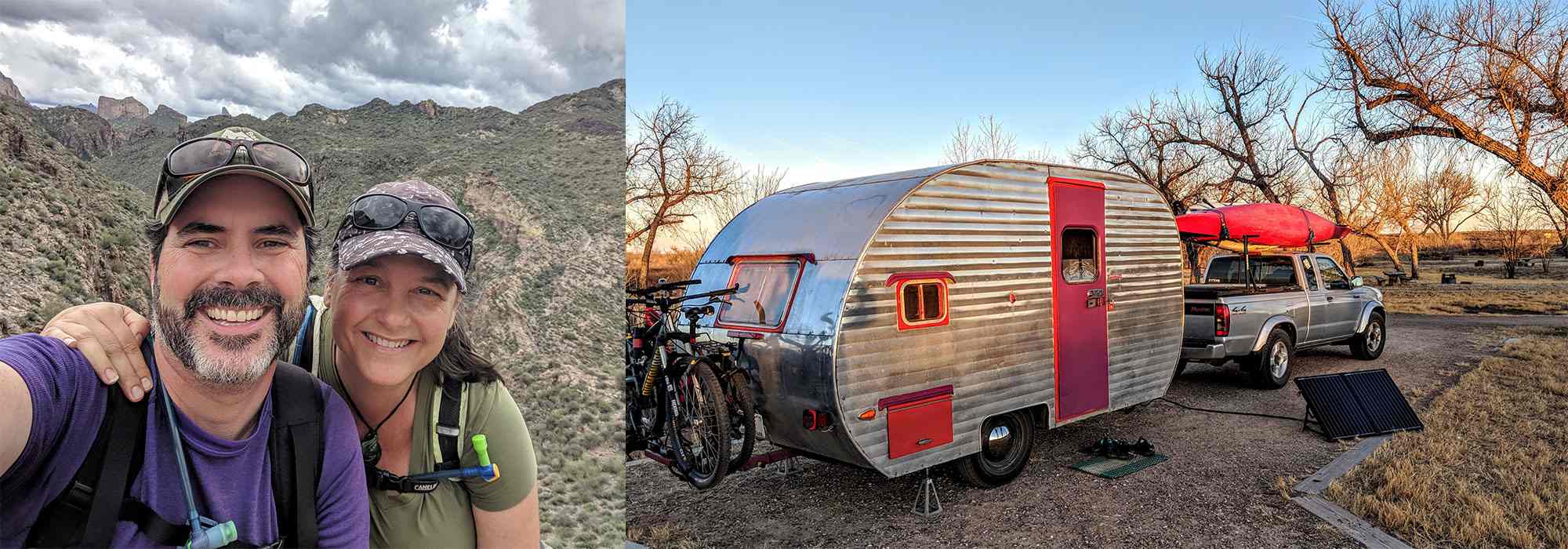Charge Controllers Demystified!
Every off-grid solar power system has 4 major components. The first two, solar panels and batteries, seem obvious -- one collects energy, the other stores it. But charge controllers and inverters can be a bit more befuddling. What do they actually do? This blog tackles the first of these 2 components, and demystifies the important role that a charge controller plays in your solar powered system.

What is a charge controller?
The charge controller is the gatekeeper or regulator to the whole system. It constantly monitors and adjusts the flow of energy coming from the solar panel(s) to the battery (or battery bank). Just like solar panels, charge controllers come in many different sizes and types. There is no such thing as a universal charge controller, so it is very important to choose the appropriate device for your specific solar application.
Why is it an essential part of a solar power system?
Overcharging a battery is very dangerous as it can damage your battery and possibly cause a fire. With a charge controller constantly monitoring the flow of power from the panel, it not only prevents disaster but makes using and monitoring the system less of a hassle.
How many charge controllers do I need?
Since the charge controller is the gatekeeper between the panels and the batteries, it is important to have just one controller regardless of how many panels or batteries you have connected to your system. Having more than one is like a person with more than one brain; the body would receive mixed signals from different sources and those signals might get crossed.
Note: If you are building a very large solar powered system (greater than 1000W), there may be an exception to this rule. We suggest consulting a Renogy technician with specific questions.
Why would I choose a foldable solar suitcase panel without a charge controller?
Renogy has various foldable solar suitcase models in their product line -- each is offered with or without a built-in charge controller. If your RV’s solar power system already has a charge controller mounted inside, you do NOT need a solar suitcase with a built-in controller. If your system does not have a charge controller mounted inside, you need to purchase the solar suitcase with the built-in controller for the reasons outlined above. Note: We recommend contacting your RV manufacturer to find out which components are already included in your system. When it says “solar ready,” it usually just means that it has a brand specific input port connected to the batteries, no actual solar components.

Charge controllers come in PWM or MPPT, what is the difference?
This is one of the most confusing concepts for solar beginners to grasp, but you don’t need a degree in Physics or Engineering to understand it.
PWM = Pulse Width Modulator
This controller is basically a simple regulator switch that connects the solar panel(s) to the battery (or battery bank) and is automatically turned on or off depending on the requirement of the battery. PWM controllers are often used with smaller, more simple systems and are relatively inexpensive -- perfect for upfront savings.
MPPT = Maximum Power Point Tracking
Conversely, this controller offers a more sophisticated process which automatically adjusts the input voltage to harvest the maximum power from the solar panels. It then transforms this power according to what the battery needs at that moment, in addition to any load on the system (appliances, lights, etc.) Depending on the climate you live in and how many days you plan to rely on your battery bank with little solar gain, MPPT controllers may provide greater savings over the long term. In layman terms, this type of controller tends to be more efficient, but also a much greater financial investment upfront.
The information above was drawn from the following sources:
- https://www.solarlightsmanufacturer.com/what-is-difference-between-pwm-and-mppt-solar-charge-controllers/
- https://www.anethic.com/pwm-and-mppt-solar-charge-controller/
In addition, the chart above provides a more in-depth explanation to help you make the appropriate choice. We also recommend discussing your specific situation with a Renogy technician.

Why would I want a charge controller with a Bluetooth port and module?
Often times your charge controller is hidden deep within the bowels of your RV, therefore it is hard to get to when you want to know how many watts are coming from the panel(s), battery charge status, and load on your system. Renogy offers a Bluetooth port on most of their new and improved charge controllers, which is compatible with their Bluetooth module (sold separately). Once you have the controller and module installed, download their free Bluetooth app which allows you to monitor your system from your smartphone.
There are so many options on the website! How do I choose among Renogy’s line of charge controllers?
Renogy offers a wide range of charge controllers, each with different features depending on the type and size of system you seek to build. Making a choice between the options can be a bit confusing; below we offer a quick breakdown of each in order to provide a side-by-side comparison and help demystify the key differences among the charge controller options.
Designed for small and simple solar power systems. Can be used with many types of battery banks (flooded, gel, sealed, or Lithium Phosphate). Both models are compatible with 12V or 24V systems.
Wanderer 10A: A very basic model can support up to 120W on a 12V or 240W on a 24V system. Device offers an integrated 5V 2A USB ports to charge USB devices. Offers an LCD screen and multiple LED indicators for displaying system operation information. No Bluetooth port, so this unit not compatible with the optional Bluetooth module.
Wanderer 30A: A new and improved model can support up to 400W on 12V systems. Does not have built-in USB ports or an LCD screen, but offers multiple LED indicators for displaying system operation information. Includes a Bluetooth port, with Bluetooth module sold separately.
Note: This is the charge controller we have in our travel trailer, and it is perfect for our 100W panel and our 50AH Lithium Iron Phosphate battery. We opted
for the Bluetooth module so that we could easily see the charging status of our
panel and battery via our smartphone.
Check out our
video of the installation of our new Lithium battery,
charge controller, and Bluetooth module for more information.
Designed for outdoor applications, this is Renogy’s only waterproof charge controller. Offers an LCD screen and multiple LED indicators for displaying system operation information. Compatible with 7 different battery types (Lithium ion, Lithium Iron Phosphate, LTO, gel, AGM, flooded, and calcium) on a 12V system. Offers 5-stage charging (soft-start, bulk, absorption, float, and equalization). No Bluetooth port, so this unit is not compatible with the optional Bluetooth module. An optional temperature sensor is available to measure the temperature at the battery and allows the controller to use this data for accurate temperature compensation. Note: When the battery is located a good distance from the charge controller, a temperature sensor is highly recommended.
Voyager 20A: Can support up to 240W on a 12V system.
Rover Models (MPPT)
Designed for the most efficient and sophisticated solar power system you can build. It can be used with the following types of battery banks: flooded, gel, sealed, or Lithium Iron Phosphate. The 20A-30A-40A models are compatible with 12V or 24V systems, while the large models (60A and 100A) can support 36V or 48V systems. Each of the 5 Rover models has an LCD screen and multiple LED indicators for displaying system operation information, customizable parameters, and error codes, as well as 4-stage charging (bulk, boost, float, and equalization) and temperature compensation to increase your battery life
and improve your system's performance. Each model offers a Bluetooth module port, with the Bluetooth module sold separately.
Rover 20A: Can support up to 260W on 12V or 520W on 24V systems.
Rover 30A: Can support up to 400W on 12V or 800W on 24V systems.
Rover 40A: Can support up to 520W on 12V or 1040W on 24V systems.
Rover 60A: Can support up to 800W on 12V, 1600W on 24V, 2400W on 36V, or 3200W on 48V systems.
Rover 100A: Can support up to 1300W on 12V, 2600 watts on 24V, 3900 watts on 36V, or 5200 watts on 48V systems. Note: This off-grid controller was designed for large-scale projects, both mobile and stationary. For even more power, users can utilize a unique feature limited to this Rover and connect two 100A Rover controllers in parallel for a total of 200 amps!
This newly released solar battery charger replaces a standard charge controller as it can charge an RV house battery in a couple different ways. It can be used with many types of 12V battery banks (flooded, gel, AGM, and Lithium Iron Phosphate) using 3-stage charging (bulk, boost, float). Can support up to 660W on a 12V system.
The two different options for charging your RV’s battery are:
1) use the alternator connected to your vehicle’s starting battery while driving
2) use solar panels connected directly to the unit
Is this clear as mud yet? Even when we try to break this information down to digestible portions, just the load (pun intended) of information and specs can become quickly overwhelming. The important takeaway here is that you must have a charge controller in any solar power system. In order to choose the right one, you need to know how big your system will be. In order to know the system size, you need to decide what you want to run with solar power , and where you plan to use it. It all comes down to deciding how much you need vs. how much you want.

Learn more about Shari & Hutch’s solar powered adventures on their website and join them on the road via social media at Facebook, Instagram, and YouTube!
See other related articles at Renogy:
A Guide to Installing Solar Panels On Van Or RV
Solar Panels 101: A Beginner's Guide
The Ultimate Guide To DIY Off-Grid Solar Systems
Do solar panels increase home value
how efficient are solar panels
How Many Solar Panels Do I Need








